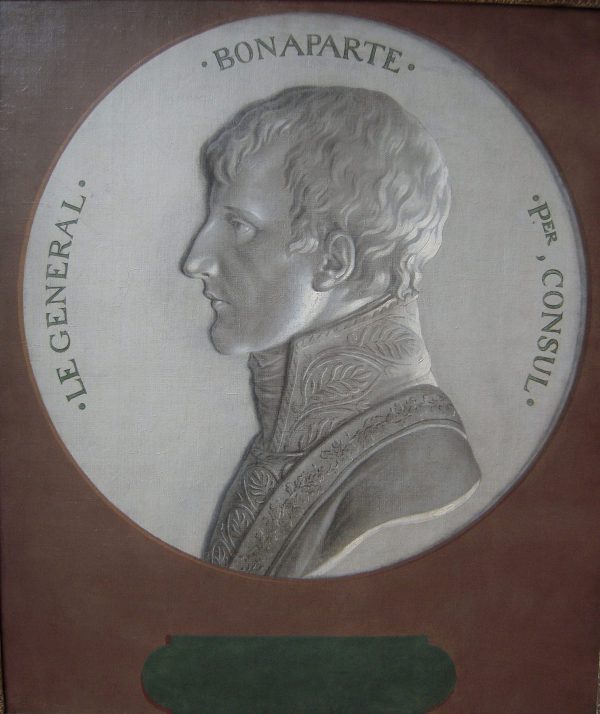A Trompe-l’oeil Portrait of Napoleon Bonaparte as First Consul, Ca. 1800-1804.
Oil on canvas, H. 0.714 m; W. 0.614 m
Provenance: Private collection, France.
Born in Tournai, Flanders, Piat Joseph Sauvage studied with van Spaendonck in Antwerp. He had settled in Paris by 1774, the first year he is recorded member of the Academy of St. Luke. In 1781 he was admitted to the Académie royale de peinture et de sculpture (he became a full member in 1783) and from then on exhibited regularly at the Salon until 1804 (see M. and F. Faré, La vie silencieuse en France. La nature morte au XVIIIe siècle, Fribourg, 1976, p. 276-285.)
Although Sauvage painted numerous still life pictures, the enormous fame he enjoyed during his lifetime was mainly due to his remarkable trompe-l’oeil imitations of bas-relief sculptures. These imitated visual effects of classical antiquities or modern bas-relief sculptures, especially works by Duquesnoy or Clodion, in marble, stucco, terracotta, bronze and cameo technique. He was much in demand by the Court for this speciality, and by 1780 he had been appointed official painter official painter to the Prince de Condé. He subsequently painted many overdoors resembling sculptural reliefs at Versailles, Fontainebleau and Compiègne.
During Napoleon’s reign, Sauvage received a number of commissions, some of which were for portraits of the Emperor. The present painting depicts Napoleon as First Consul, an office he held from 1799 to 1804, before becoming Emperor. Other versions of this portrait are in the Château de Malmaison, the Musée Marmottan, the Musée Carnavalet, the Bibliothèque de l’Institut de France, Paris, as well as in the Alte Pinakothek, Munich.
